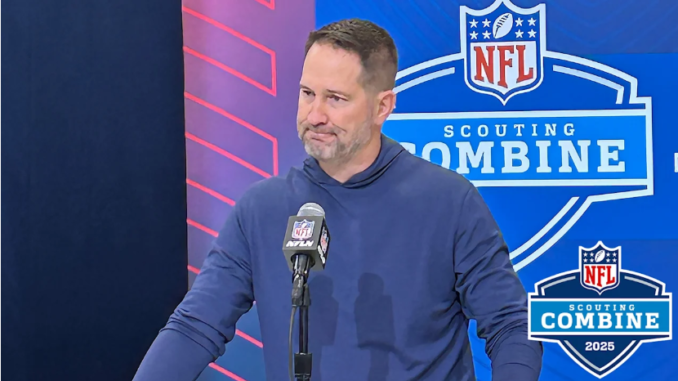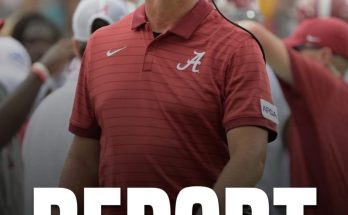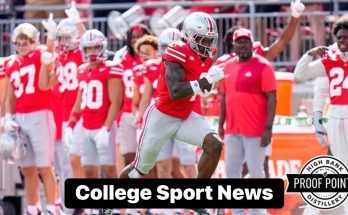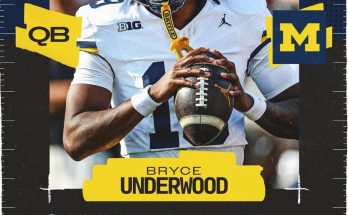In the wake of a disappointing 2024 season, the Dallas Cowboys have turned to Brian Schottenheimer to rejuvenate their offense. As the newly appointed head coach, Schottenheimer brings a wealth of experience and a clear vision to restructure key components of the team’s offensive strategy, focusing on the offensive line (OL), running back (RB) corps, and free agency approach.
Revamping the Offensive Line
A cornerstone of Schottenheimer’s plan is the transformation of the offensive line. The anticipated retirement of veteran right guard Zack Martin leaves a significant void. Martin’s departure not only impacts the line’s performance but also the leadership dynamics within the unit. To address this, the Cowboys are exploring both internal adjustments and external acquisitions.
One internal candidate for a positional shift is Cooper Beebe. Originally playing center, Beebe has extensive experience at guard from his college days at Kansas State. Schottenheimer acknowledges the potential of moving Beebe back to guard, stating, “We’ll see… We are always going to play the best five. It’d be hard to move a guy that had that much experience playing center this year at a high level, but anything’s on the table depending on playing the best five.”
In addition to internal evaluations, the Cowboys are active in the free-agent market. The initial plan to pursue elite guard Trey Smith was thwarted when the Kansas City Chiefs applied the franchise tag, securing Smith for another season. This development necessitates a reassessment of available talent. Veteran options like Kevin Zeitler and younger prospects such as Teven Jenkins are under consideration to fill the gap left by Martin.
The coaching staff’s composition further underscores the emphasis on offensive line excellence. The hiring of Klayton Adams as offensive coordinator and Conor Riley as offensive line coach brings a wealth of knowledge and a fresh perspective. Schottenheimer expressed confidence in this duo, highlighting their potential impact: “The influence of Klayton [Adams], the influence of Conor Riley… I think we hit a home run.”
Reconfiguring the Running Back Room
The Cowboys’ ground game faced challenges in 2024, prompting a strategic overhaul of the running back roster. With Rico Dowdle entering free agency, the team is exploring options to enhance their backfield. One notable target is Nick Chubb, a former Pro Bowler known for his consistent 1,000-yard seasons prior to injury. Chubb’s potential pairing with existing talent could provide the dual-threat backfield Schottenheimer envisions.
Schottenheimer’s criteria for running backs extend beyond traditional rushing capabilities. He emphasizes the importance of versatility, particularly in pass-catching roles. “I do believe that you have to have the ability to catch the ball coming out of the backfield… That doesn’t mean they have to play like a receiver, but they have to be able to run routes coming out of the backfield and have the ability to separate and run after the catch,” Schottenheimer elaborated.
This philosophy suggests a shift towards a more dynamic and unpredictable offense, where running backs are integral to both ground and aerial attacks. Such an approach aims to keep defenses off balance and maximize the skill sets of versatile players.
Strategic Free Agency Approach
Navigating the complexities of free agency is pivotal to Schottenheimer’s blueprint. The Cowboys are adopting a “selectively aggressive” stance, prioritizing the retention of key in-house talents while remaining vigilant for external opportunities. Defensive tackle Osa Odighizuwa, an unrestricted free agent, exemplifies this approach. Schottenheimer expressed a strong desire to retain Odighizuwa, highlighting his contributions and potential for future impact: “He’s a terrific young player, he does everything right… he’d be a guy we’d love to have back.”
The strategy also involves difficult decisions regarding veteran players. DeMarcus Lawrence, a stalwart on the defensive line, faces an uncertain future with the team. Balancing his experience and leadership against salary cap considerations requires careful deliberation. Similarly, safety Malik Hooker’s role is under evaluation, especially with the arrival of new defensive coordinator Matt Eberflus, whose system may necessitate different skill sets.
In terms of acquisitions, the Cowboys are targeting players who align with Schottenheimer’s vision of a physical and versatile offense. The potential signing of running back J.K. Dobbins reflects this intent, aiming to bolster the ground game and provide a reliable option in both rushing and receiving facets.
Implementing a Dynamic Offensive Philosophy
Beyond personnel changes, Schottenheimer is introducing a dynamic offensive philosophy centered on adaptability and unpredictability. Drawing from his tenure with Pete Carroll in Seattle, he plans to implement strategies that play to the strengths of his players. “If your system’s not flexible enough to do what your players do well then you’re probably in the wrong business,” Schottenheimer asserted.
Key elements of this philosophy include the use of pre-snap motions and shifts to create defensive confusion, as well as a commitment to marrying the run and pass games to maintain a balanced and deceptive offense. Schottenheimer also plans to incorporate varying tempos, allowing the offense to control the game’s pace and keep defenses reactive. This approach aims to foster a more fluid and responsive offensive unit, capable of adjusting to in-game developments and exploiting defensive weaknesses.
Conclusion
Brian Schottenheimer’s blueprint for the Dallas Cowboys signifies a comprehensive and strategic overhaul of the team’s offensive operations. By focusing on restructuring the offensive line, revitalizing the running back room



